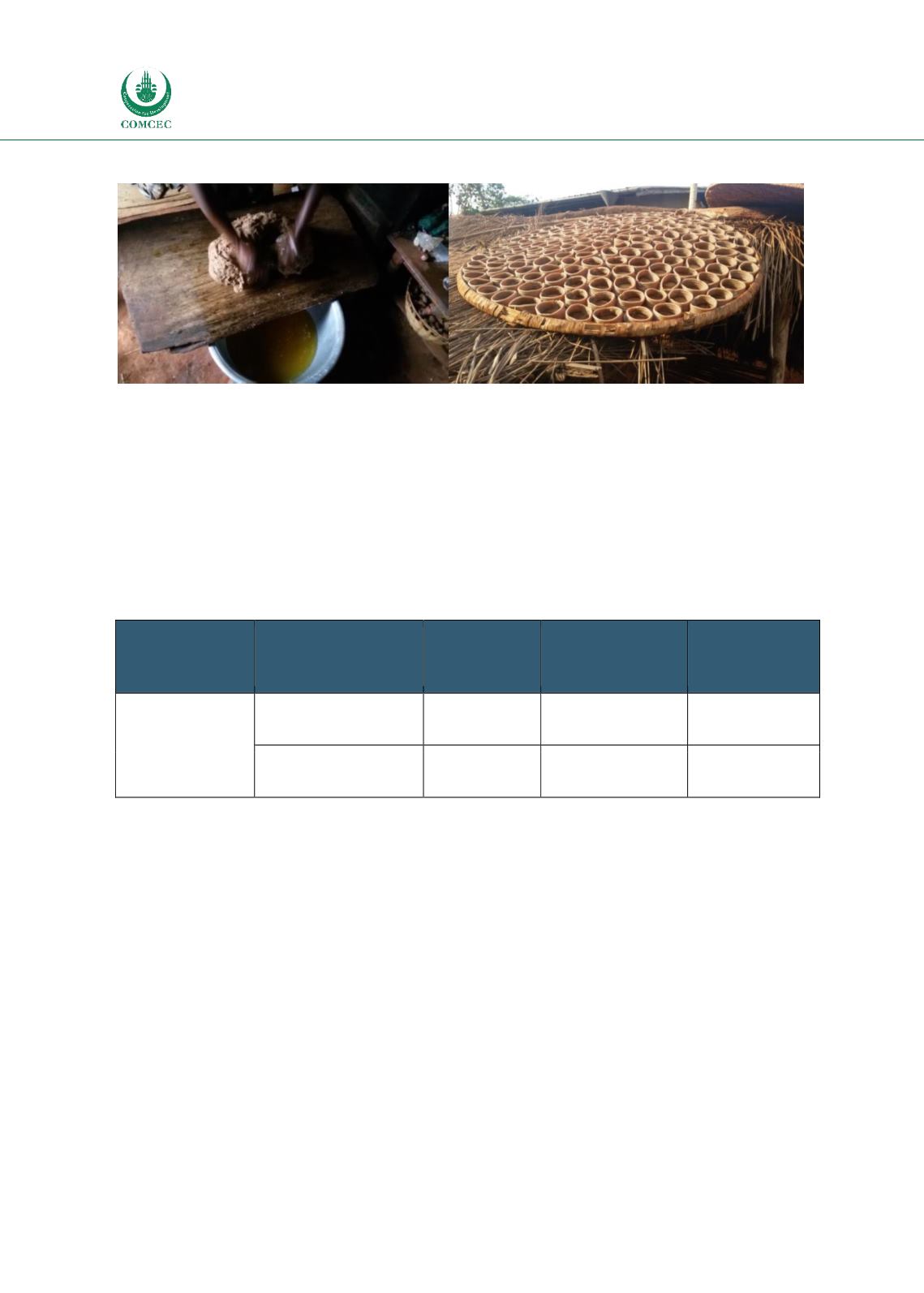

Reducing On-Farm Food Losses
In the OIC Member Countries
68
Figure 3.11: Processing Peanut into Oil and Groundnut Sticks
Source: Site Visits
The price for peanuts set by the producers who generally prefer to store peanuts and then sell
in times of shortage. The peanut oil vendors, peanut stick processors or those that sell roasted
peanuts are all potential customers. These clients prefer to buy large seed peanuts. A 100kg bag
of unshelled peanuts is sold for around 12 000 FCFA (20$) in times of abundance, while in times
of shortage it costs around 20,000 FCFA (40$). A bowl of shelled peanuts (30kg) costs around
25,000 FCFA (50$) in times of plenty and in times of shortage it costs around 42,000 FCFA (84$).
Table 3.10: Summary of the Volume and Market Value of On-Farm Losses of Groundnuts in Benin
Total Volume
Produced per
Annum
Conservative
Estimates of On-
Farm Losses
Losses in
Volume
Market Value per
Tonne
Losses in Value
150,000 Tonnes
2% In-Shell Peanuts
3,000
$200 In-Season
$400 Off-Season
$ 600,000
$ 1.2 million
5% Shelled Peanuts
7,500
$500 In-Season
$840 Off-Season
$ 3.75 million
$ 6.3 million
Source: Based on Above Estimates.
3.4.3. Causes of On-Farm Losses
The major diseases of economic importance affecting the groundnut crop in the field in West
Africa and Benin are early and late leaf spots (Cercospora arachidicola [Mycosphaerella
arachidis]), Phaeoisariopsis personata (M. berkeleyi), rust (Puccinia arachidis), collar rot
(Aspergillus spp.), root rot (Macrophomina phaseolina) and stem rot (Sclerotium [Corticium]
rolfsii). Among the major insect pests damaging groundnut are termites of the genus
Microtermes (Isoptera: Termitidae); whitegrub (Coleoptera: Scarabaeidae) and millipede
(Myriapoda: Odontopygidae) (FAO, 2003).
It is important to harvest groundnut at the right time, meaning when the crop is mature. This
can be difficult because flowering is indeterminate in the groundnut. Therefore, there is a
variable proportion of mature and immature pods at the end of the crop cycle. Groundnuts are
mature when 70-80% of the inside of the pods shells have dark markings and the kernels are
















